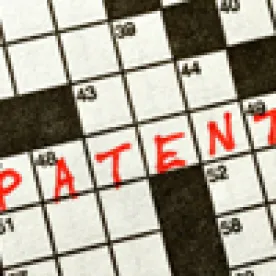Takeaway: If a petitioner argues that a means-plus-function limitation cannot be construed, but then provides a construction for the purposes of inter partes review, the Board may not adopt the construction and deny institution of grounds based on the erroneous construction.
In its Decision, the Board determined that there is a reasonable likelihood that Petitioner would prevail in proving unpatentability of claims 10 and 11 of the ’725 Patent, but not with respect to claims 1-9. Therefore, the Board instituted inter partes review of claims 10 and 11. The ’725 Patent relates to computer-assisted microsurgery equipment or methods for controlling same.
The Board began with claim construction, noting that the Board interprets claim terms of an unexpired patent using the broadest reasonable interpretation in view of the specification. The Board determined that the only term that needed to be construed was “means for determining coordinates of the tool in the fixed reference frame Rc based on data from the image data base” as recited in claim 1. The Board noted that the phrase “means for” creates a rebuttable presumption that the drafter intended to invoke the means-plus-function limitation under 35 U.S.C. § 112 ¶ 6. Therefore, the Board had to identify the claimed function and then look to the specification to identify the corresponding structure that performs the claimed function. Both parties agreed that the means in claim 1 should be construed in accordance with 35 U.S.C. § 112 ¶ 6. Petitioner asserted that there is no disclosure in the specification of “how the position of the tool could be found in the camera coordinate system Rc ‘based on data from the image data base.’” Therefore, Petitioner asserted that the means-plus-function clause cannot be construed, but then construed the phrase for purposes of inter partes review.
The Board did not adopt Petitioner’s proposed construction stating that it would be inappropriate to adopt a function different from that explicitly recited in the claim. Patent Owner construed the limitation as “an algorithm or software running on a computer system that ‘obtains the transformation oTi(g), inverse of iTo(t), making it possible to automatically control the tool in real time in relation to a target defined in the image data base.’” The Board, therefore, had to determine whether one of ordinary skill in the art would have understood the disclosure to encompass an algorithm or software for determining the coordinates of the tool in the fixed reference system based on data from the image data base, “not simply whether one of skill in the art would have been able to write such a software program.” The Board determined it was not possible and stated that the means-plus-function limitation cannot be construed.
Based on the lack of construction of the means-plus-function limitation, the Board found that claim 1, and its independent claims 2-9, are not amenable to construction and could not be reviewed. In a footnote, the Board noted that even if the means-plus-function limitation was amenable to construction, Petitioner’s challenges were premised on an erroneous claim construction, and Petitioner did not explain how the prior art taught the limitation as properly construed.
The Board then turned to whether claim 10 is obvious over Schulz and Heilbrun. Petitioner relied on Schulz for all of the limitations except for the recitations of cameras, arguing that one of ordinary skill in the art would appreciate that the cameras disclosed in Heilbrun could be substituted for the light sensors disclosed in Schulz. The Board then reviewed the evidence presented by Petitioner in support of this statement and found that Petitioner had sufficiently shown that the mathematical transformations recited in independent claim 10 necessarily flow from the teachings of Schulz, and that a combination of Schulz and Heilbrun teaches all of the limitations of claim 10.
The Board then examined whether claim 11 is obvious over Schulz, Heilbrun, and Glassman. Petitioner relied upon Schulz and Heilbrun for most of the elements of claim 11, and on Glassman for the remaining element. Petitioner asserted that it would be advantageous to add automatic tool control to Schulz’s disclosure to prevent mistakes and allow the surgeon to focus on things other than manipulating the tool. Again, the Board found that Petitioner had sufficiently shown that the mathematical transformations recited in claim 11 necessarily flow from the teachings of Schulz, and that a combination of Schulz, Heilbrun, and Glassman teaches all of the limitations of claim 11.
Brainlab, AG and Varian Medical Systems, Inc. v. Sarif Biomedical LLC, IPR2014-00753
Paper 10: Decision on Institution of Inter Partes Review
Dated: November 4, 2014
Patent: 5,755,725
Before: Michelle R. Osinski, Scott E. Kamholz, and David C. McKone
Written by: Osinski
Related Proceedings: Sarif Biomedical LLC v. Brainlab Inc., No. 1:13-cv-00846-LPS (D. Del.); Sarif Biomedical LLC v. Siemens Medical Solutions USA Inc., No. 1:13-cv-00847-LPS (D. Del.); Sarif Biomedical LLC v. Accuray, Inc., No. 1:13-cv-00151-LPS (D. Del.)



 />i
/>i

